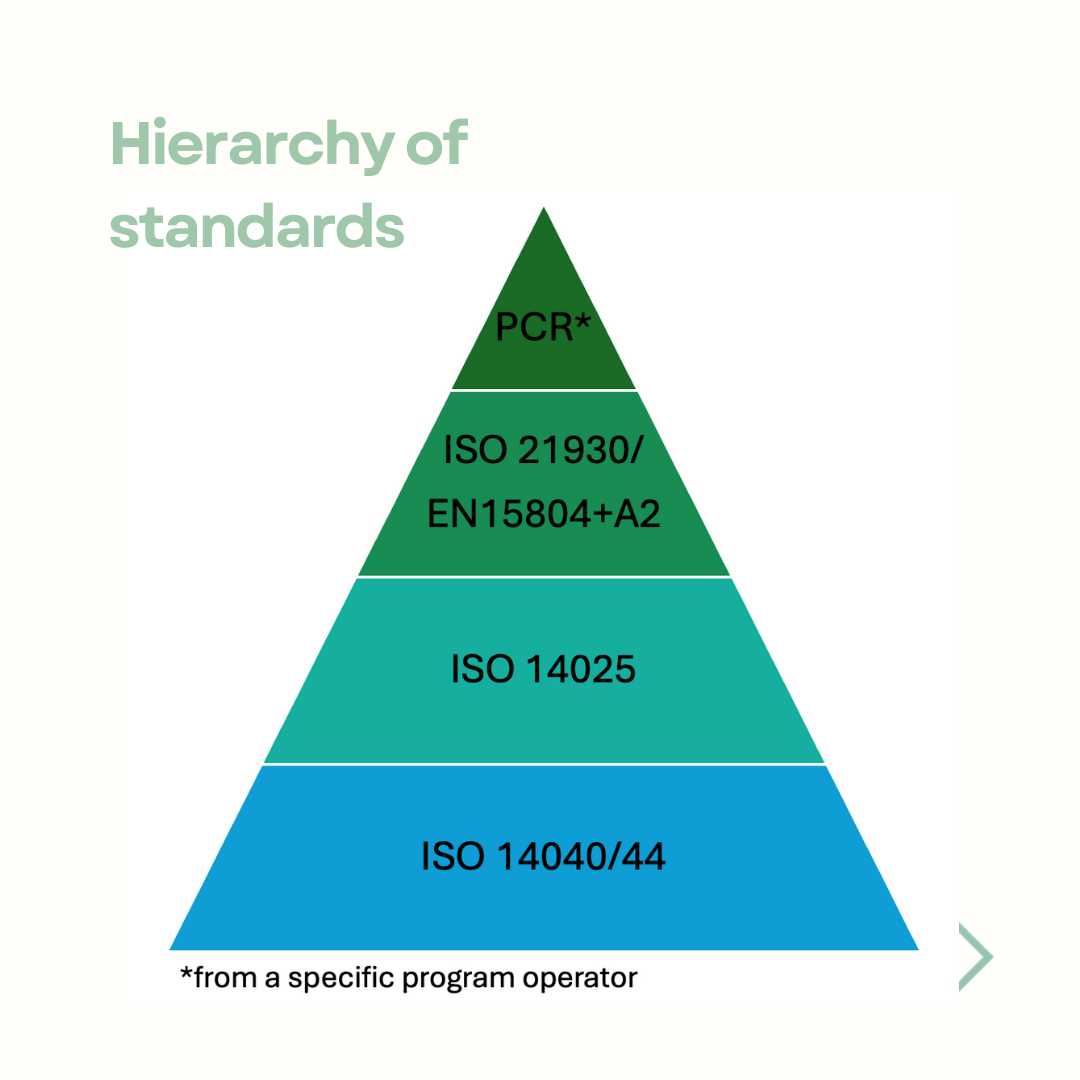EPD Standards
Standards for EPDs
Remember all those standards listed on environmental product declarations EPD?
Let’s have a look at the most important ones!
🌼 ISO 14040 and ISO 14044
These two key standards define the principles for use of life cycle assessment (LCA) as a method for quantifying environmental impacts. Topics such as goal and scope definition, LCA stages, limitations, inventory analysis and impact assessment phases are covered, though the standard does not prescribe specific methodologies for practical execution of an LCA.
🌸 ISO 14025
The purpose of this standard is to provide a framework for environmental declarations, labels and programs of Type III. Type III environmental declarations are primarily used for B2B communication and implement mandatory third-party verification; the standard also describes their relation to ISO 14040 and ISO 14020 (standard for environmental statements) series.
Essentially, this standard supports the integrity of the EPD system by setting a framework for the content of declarations, how program operators should develop their platforms, the role of verification and additional requirements for B2C communication.
🌺 ISO 21930
This standard is complementary to ISO 14025 and it specifies how EPDs for construction products and services should be done by providing core rules. Over 90 000 EPDs globally claim compliance with this standard, most of them based in the US. Since the introduction of EU-wide standard EN15804+A2, the two standards are no longer 100 % aligned, though they perform the same role.
🌻 EN 15804+A2
This standard functions as a EU-wide core PCR (product category rules) for construction products and works. Thus, all program operators publishing EPDs for the European market need to align their PCRs with this one, which enables greater harmonization and comparability of EPDs.
The A2 refers to an update issued in 2019, which among other things expanded the range of environmental impact categories, the scope of the LCA, how biogenic carbon is measured and how module D is calculated.
This standard is largely aligned with ISO 21930, however, some small differences exist, thus for compliance with both standards, certain conditions must be met (for example, when making an EPD of multiple products, the ISO imposes stricter requirements on the permissible variability of environmental impacts).
Despite being a European standard, many non-EU manufacturers are choosing to use it for their EPDs as it is the most comprehensive set of rules currently available within the EPD system.
